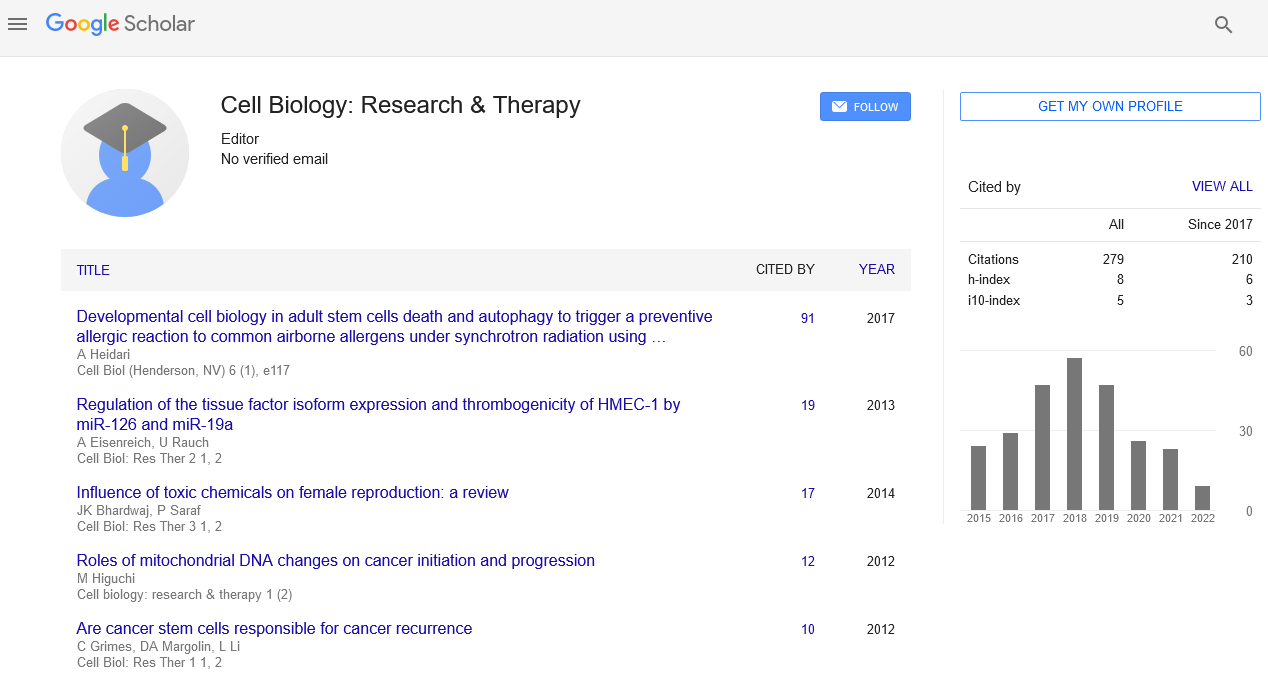Editorial, Cell Biol Henderson Nv Vol: 6 Issue: 1
Developmental Cell Biology in Adult Stem Cells Death and Autophagy to Trigger a Preventive Allergic Reaction to Common Airborne Allergens under Synchrotron Radiation Using Nanotechnology for Therapeutic Goals in Particular Allergy Shots (Immunotherapy)
Alireza Heidari*
Faculty of Chemistry, California South University, 14731 Comet St. Irvine, CA 92604, USA
*Corresponding Author : Alireza Heidari
Faculty of Chemistry, California South University, 14731 Comet St. Irvine, CA 92604, USA
Tel: +1-775-410-4974
E-mail: Scholar.Researcher.Scientist@gmail.com
Received: May 29, 2017 Accepted: May 31, 2017 Published: June 05, 2017
Citation: Heidari A (2017) Developmental Cell Biology in Adult Stem Cells Death and Autophagy to Trigger a Preventive Allergic Reaction to Common Airborne Allergens under Synchrotron Radiation Using Nanotechnology for Therapeutic Goals in Particular Allergy Shots (Immunotherapy). Cell Biol (Henderson, NV) 6:1. doi: 10.4172/2324-9293.1000e117
Abstract
Tree Pollen, Grass Pollen, Weed Pollen, Mold Spores, Cat Dander, Dog Dander, House Dust Mites, Cockroaches, Feathers, other dander and organic fibers are most effective airborne allergens. Airborne allergens coordinate to DNA/RNA and this coordination not only inhibits replication and transcription of DNA/RNA, but also leads to programmed adult stem cells death and autophagy (apoptosis) to trigger a preventive allergic reaction to common airborne allergens under synchrotron radiation using nanotechnology for therapeutic goals in particular allergy shots (immunotherapy). The corresponding trans isomer of airborne allergens also forms a coordination complex with DNA/RNA, but unlike cis isomer, trans isomer is not an effective chemotherapeutic agents. This editorial was designed to compare the interactions of cis and trans isomers of airborne allergens with adult stem cells DNA/RNA in aqueous solution at physiological conditions by 1 HNMR, 13CNMR, 31PNMR, Attenuated Total Reflectance Fourier Transform Infrared (ATR– FTIR), FT–Raman, UV–Vis and HR Mass spectroscopic methods using constant DNA/RNA concentration and various Nano drug/ DNA/RNA (Phosphate) ratios. 1 HNMR, 13CNMR, 31PNMR, Attenuated Total Reflectance Fourier Transform Infrared (ATR– FTIR), FT–Raman, UV–Vis and HR Mass spectroscopic methods have used to determine binding constant and the stability of DNA/ RNA in Nano drug–DNA/RNA complexes in aqueous solution. Spectroscopic evidence showed major binding of cis isomer to G–N7 DNA/RNA with overall binding constants.
 Spanish
Spanish  Chinese
Chinese  Russian
Russian  German
German  French
French  Japanese
Japanese  Portuguese
Portuguese  Hindi
Hindi 